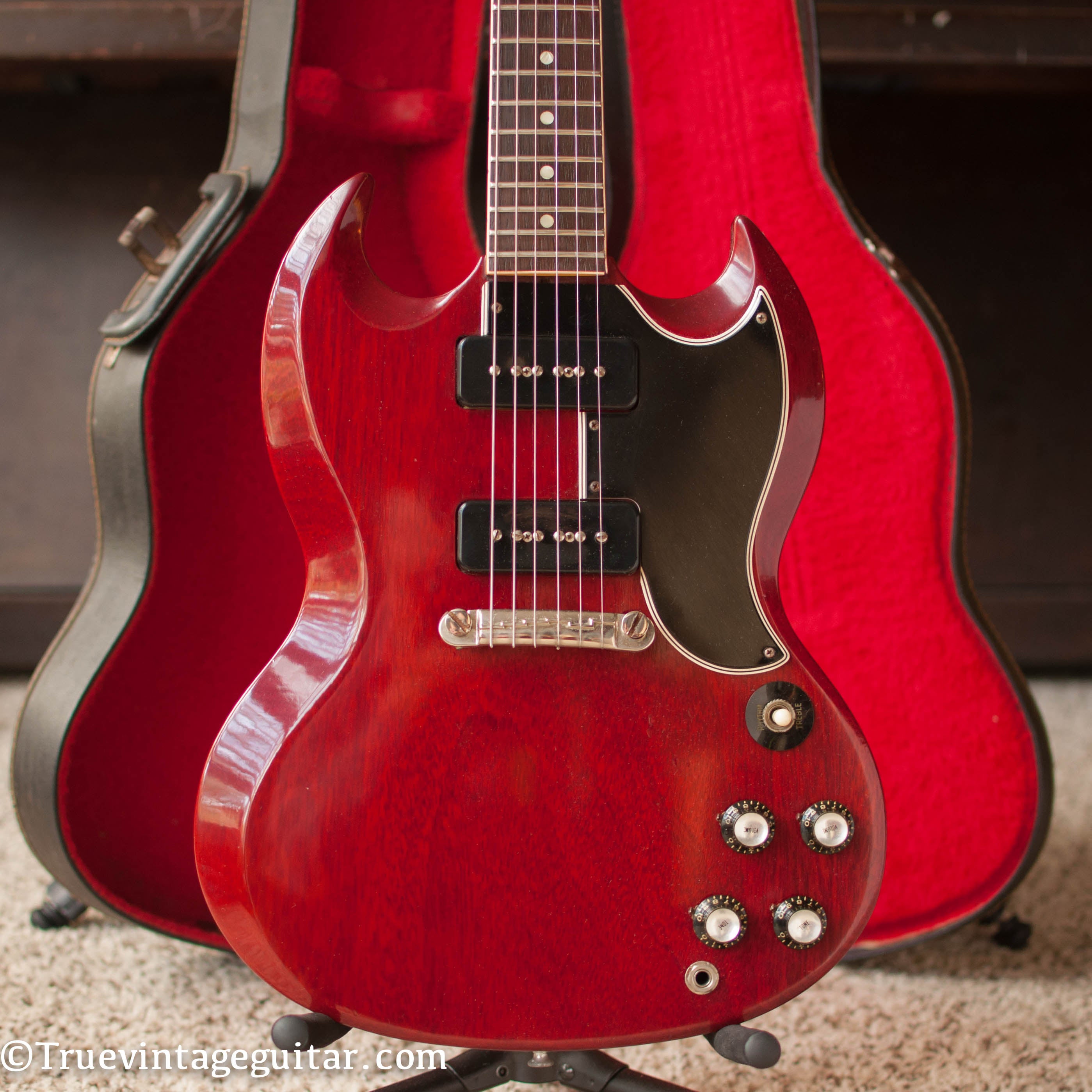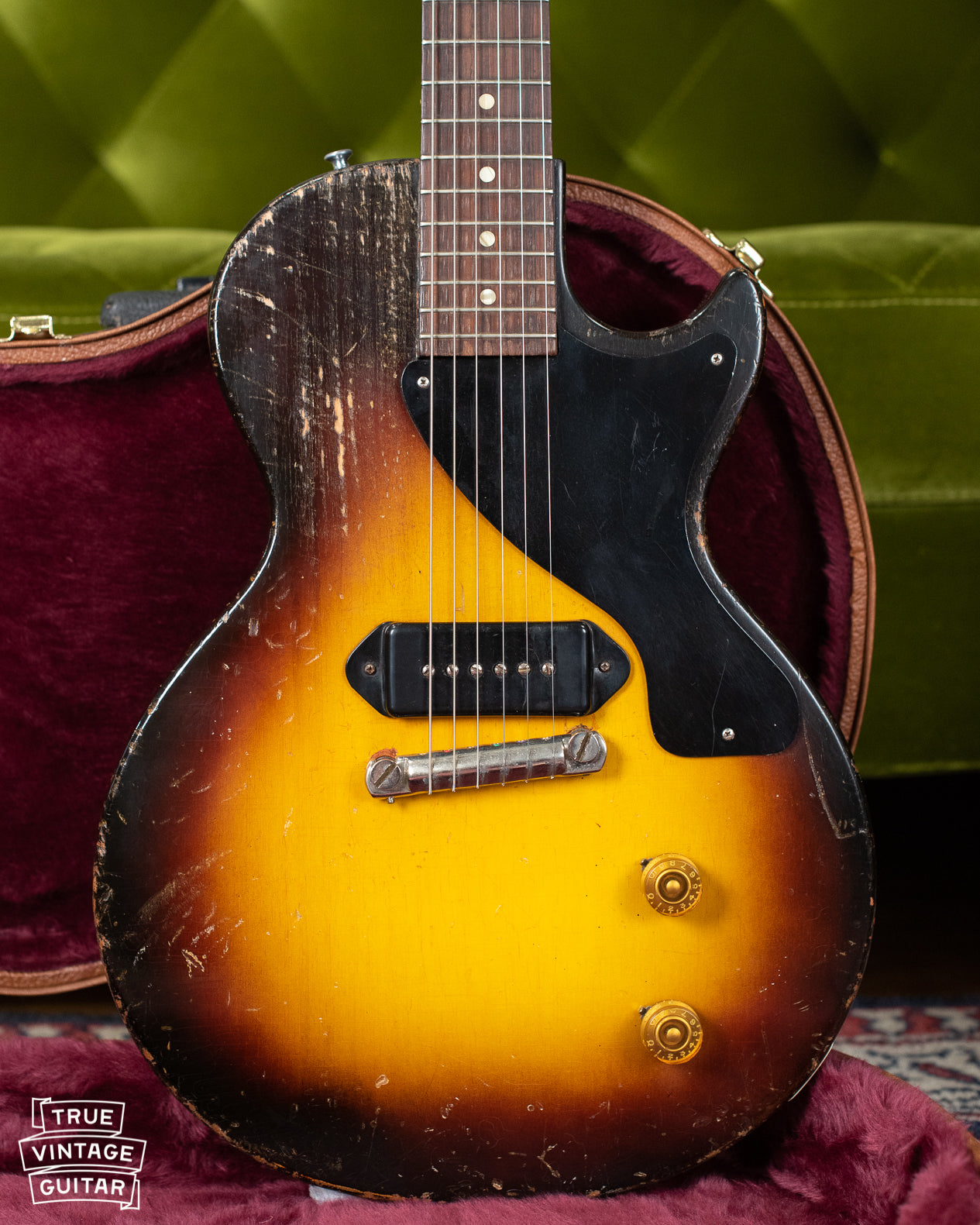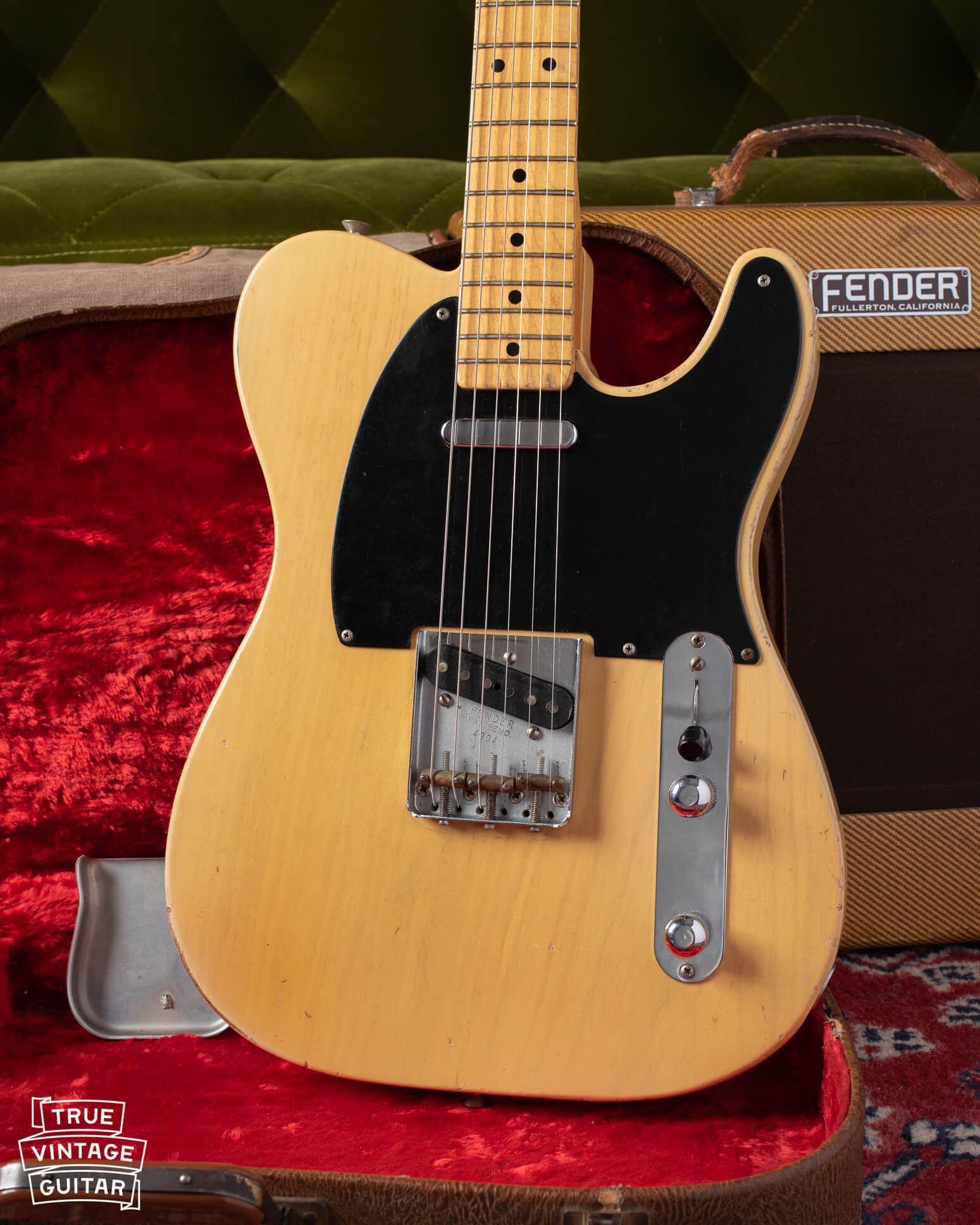This 1962 Gibson SG Special was purchased by Mrs. Drew from the Forbes Music Co in Birmingham, AL in 1962. I was lucky to be its next owner. I'm always a Gibson guitar buyer, but I'm especially looking for Gibson electric guitars from the 1950s, 1960s, and 1970s. You can contact me here to sell a Gibson guitar.
Get help with Gibson guitar dating here: How to date a Gibson Les Paul.
Mrs. Drew played lightly in the first position for a short time before losing interest in the guitar. It went into her closet but was taken out from time to time to strum a few chords. Mrs. Drew passed some 20 years ago and her son never learned to play. He's decided that it's time someone else appreciates it for the fine vintage instrument that it is. Mrs. Drew played the SG Special very lightly and treated it with care her whole life. She never modified it or had it repaired unprofessionally. It retains all the original parts in perfect working condition. All it needed after all those years was a light cleaning, truss rod adjustment, a light fret polish/dress, and new strings.
The guitar plays wonderfully now and those P-90s are full and soulful. All electronics are solid and untouched other than a light cleaning with contact cleaner. The finish is nice and soft without typical finish checking. It does show signs of light wear including a few scratches and dents. This wide nut Gibson SG Special has survived in wonderful original condition and is ready to go in your collection, studio or on the road. The delicate Cherry stain that so often fades to brown is still nice and vibrant from being stored away in the closet.
Both the Les Paul Special and SG Special have long since been the more affordable, P-90 equipped part of Gibson's solid body offerings. In 1961, the Special was the first of the lineup to be completely devoid of the "Les Paul" name while the Junior retained the silk screen and the Standard had the name imprinted on the truss rod cover until mid 1963. One secret weapon that the Junior and the Special benefit from is their wrap tail piece bridge design. The wrap tail allows for maximum transfer of energy from the strings to the body of the guitar. Think that electric guitar tone only comes from pickups? Then why does a 1959 Byrdland sound so different from a 1959 Les Paul Standard when they both use Patent Applied For Humbuckers? The entire guitar shapes the tone where the pickup may be one of the more important parts. The wrap tail design allows the solid Honduran Mahogany body to affect your tone and give that warm, vintage rock and roll vibe.





